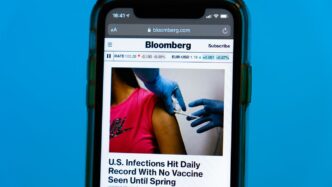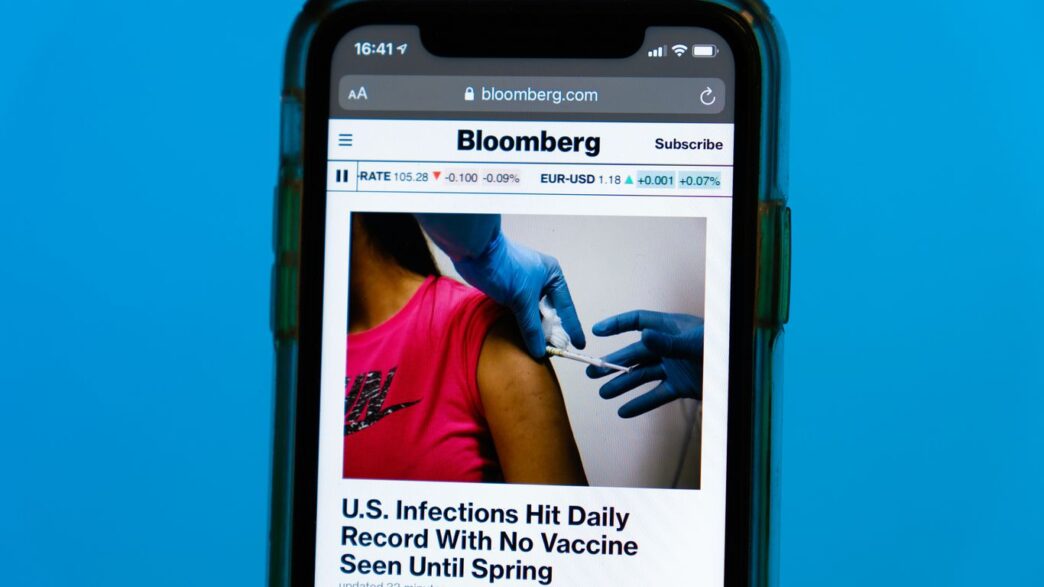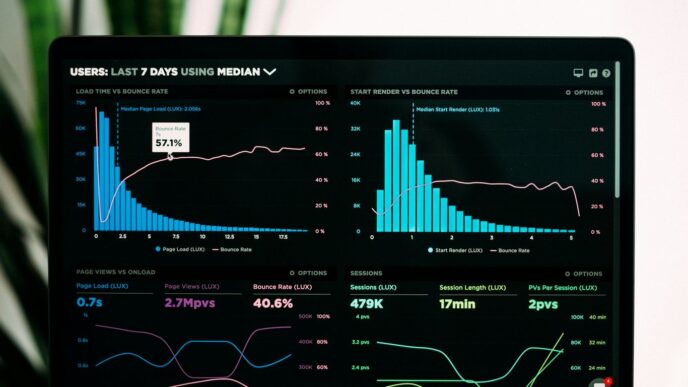Digital health is changing fast, and keeping up with the news can feel like a full-time job. That’s where Healthcare Dive comes in. In 2025, they’re helping people make sense of new tech, policy changes, and big moves in the industry. From AI breakthroughs to new rules about telehealth, Healthcare Dive is following the action and breaking it down in ways that actually make sense. If you want to know what’s happening with digital health, their coverage is hard to ignore.
Key Takeaways
- Healthcare Dive is helping people understand digital health by reporting on the latest technology, policy, and business updates.
- Their stories make sense of complicated topics like AI in healthcare, new rules, and how companies are merging or going public.
- Healthcare Dive covers real-world impacts, like how new reimbursement models affect doctors and patients, or what happens after a data breach.
- They’re not just focused on the U.S.—they look at trends and case studies from Europe and other regions too.
- In 2025, Healthcare Dive is a go-to source for anyone who wants to follow digital health without getting lost in jargon or hype.
Healthcare Dive’s Influence in Elevating Digital Health Journalism
Setting Standards in Digital Health Reporting
If you’ve tried keeping up with digital health, you know the news space is often crowded and, honestly, tough to follow. Healthcare Dive stands out by putting accuracy ahead of speed—they double-check facts and keep speculation to a minimum. Their clear approach to reporting helps readers actually understand what’s changing in digital health, not just the latest company hype. They tend to:
- Focus on verified news and skip the rumor mill
- Bring in context, not just headlines, so people don’t get lost in buzzwords
- Highlight critical voices from real digital health workers when trends emerge
This way, folks looking for news get a picture that’s up to date and not just driven by press releases.
Building Industry Trust Through Reliable News
Trust isn’t something that’s handed out in healthcare reporting; you have to earn it. Healthcare Dive’s editors seem to know this, and they back up big claims with real examples or data points. Sometimes they’ll even throw in a quick pro/con list if the news is controversial—so readers can make up their own minds. Here’s what sets them apart:
- Consistent, plain-language explanations of technology and policy changes
- Upfront disclosures about sources or industry partnerships
- Interviews and Q&As with both startup founders and hospital leaders, so there’s balance
Nobody likes feeling in the dark, especially when the stakes are high. Healthcare Dive cuts through the noise by making sources and methods clear, not just assuming readers will trust them.
Analyzing Trends That Matter Most to Providers
One thing you can count on is Healthcare Dive’s attention to issues that hit healthcare workers hardest. Instead of zeroing in on the next fancy gadget, they concentrate on changes in policy, workflows, and reimbursement that affect clinics and hospitals. Try searching for ‘telehealth reimbursement’ and you’ll probably land on something they’ve broken down this week. A quick table below shows the types of topics they cover most:
| Topic Area | % of Coverage (2025 estimate) |
|---|---|
| Digital Tools for Providers | 35% |
| Healthcare Policy Changes | 25% |
| Data Privacy & Security | 20% |
| Reimbursement Updates | 15% |
| Startups & M&A News | 5% |
Even if you’re just a casual reader, you get a sense of what’s actually changing for people on the ground—nurses, techs, and doctors—where too many outlets skip straight to the investor angle.
Driving Innovation: Healthcare Dive’s Coverage of AI and Machine Learning in Healthcare
Healthcare Dive keeps a close watch on how AI and machine learning are changing hospitals, clinics, and the daily lives of patients and staff. Honestly, it feels like almost every healthcare story lately has an AI twist—whether that’s automating tasks or tracking patient data with new tools. Here’s a look at how these stories have played out in their recent coverage.
Spotlighting Next-Gen AI Solutions for Clinical Practice
AI isn’t just a buzzword; it’s showing up in real exam rooms, helping providers spend more time with people and less staring at screens. Some of the biggest trends Healthcare Dive highlights include:
- AI-powered "ambient" listening that automatically documents doctor-patient conversations
- Smart tools for sorting medical images and flagging possible issues
- Chatbots and virtual assistants that handle routine follow-ups or scheduling
There’s honest talk about what’s working right now and what still frustrates doctors—no hype, just real examples. For instance, ambient listening is exciting, but some doctors still double-check every note for errors. Change takes time, even with the coolest tech.
Exploring Machine Learning’s Impact on Patient Outcomes
Healthcare Dive gets into the numbers—to see if machine learning actually helps people feel better or get diagnosed earlier. Here’s a sample of the kinds of results they’ve covered:
| Use Case | Measured Outcome | % Improvement (2024-25) |
|---|---|---|
| Early Sepsis Detection | Reduced ICU stays | 13% |
| Radiology Workflows | Faster scan-to-report time | 19% |
| Patient Risk Scoring | Fewer hospital readmissions | 7% |
Most stories include comments from doctors and patients, talking about whether these numbers hold up in real life—not just in sales pitches from vendors. Sometimes, outcomes aren’t as dramatic in busy clinics as in test settings, which gets a frank look too.
Highlighting Regulatory Shifts in AI Implementation
This past year, healthcare AI rules have been in the headlines more than ever. Healthcare Dive’s coverage unpacks the policy twists without drowning readers in legal language:
- New FDA pathways for faster approval and real-time updates in AI medical devices
- EU’s strict guidelines under the fresh European AI Act
- Ongoing debate about transparency—should AI explain its decisions?
- Possible rule changes (or repeals) after the administration shift in 2025
Healthcare Dive makes sense of who these rules actually affect (CIOs, vendor teams, practicing nurses), and what hospitals might need to track next. For many, it’s still an anxious wait to see how government guidance will shape real-world use.
In sum, Healthcare Dive doesn’t just report on AI buzz—they trace the good, the bad, and the confusing parts that matter to workers and patients alike.
Navigating Healthcare Policy Shifts and Regulatory Changes Through Healthcare Dive
Healthcare Dive has become one of my go-to reads, especially when it comes to understanding how policy and regulations are shaking up digital health. Their coverage isn’t just thorough; it’s grounded in the details that hospitals, startups, and clinicians actually care about.
Explaining the Impact of Administration Changes on Digital Health
Every time there’s a shift in Washington, all eyes turn to see if rules around healthcare are about to get scrapped or rewritten. With the new administration settling in, Healthcare Dive has been quick to point out what actually matters for digital health companies. Big reforms often get stalled in the first few months as new leaders figure out their next moves—Healthcare Dive tracks these pauses and the policies in progress, which can be honestly more insightful than breathless predictions.
- They highlight legislative priorities, and show which proposals are gaining steam
- Regular updates explain how regulatory decisions could impact telehealth and AI tools
- Deep-dives into funding reform, especially around Medicare and Medicaid’s digital programs
Clarifying the Effects of Evolving Telehealth Regulations
Regulators love to tweak telehealth rules—it’s sometimes hard to keep up. Healthcare Dive breaks down what’s changing (and when), so clinics and software vendors can actually plan ahead. Here’s a quick table from a recent feature, showing the regulatory shifts for this year:
| Regulation Change | Old Rule | New Rule (2025) |
|---|---|---|
| Interstate telehealth | Many states limited access | Most now allow wide access |
| Reimbursement for video | Only certain conditions paid | Most conditions reimbursed |
| Audio-only visit coverage | Case-by-case basis | Standardized reimbursement |
Instead of wading through legal jargon, Healthcare Dive lists out what changed, who it affects, and what deadlines everyone needs to know about.
Providing Insights on New AI Governance Frameworks
AI is everywhere in healthcare now, but the rules keeping it in check shift fast. Healthcare Dive pulls apart new guidelines from the FDA, the European AI Act, and state agencies, decoding what startups and hospitals need to actually do.
Three core things they spotlight:
- Breaking down every new guidance document without the legalese
- Comparing US and EU rules to help tech companies figure out where their products need updates
- Reporting when companies get surprised (or caught off guard) by new compliance checks—so everyone else can avoid mistakes
Over the next year, as more AI tools hit the market, tracking how regulations shape their design and deployment is going to be a full-time job. If I want to know what’s actually enforceable and what’s just talk, I check Healthcare Dive first.
Tracking Investment Trends: IPOs, Mergers, and Venture Capital Updates on Healthcare Dive

Staying on top of investment trends in digital health isn’t just about following the money—it’s about understanding where innovation is heading next. Healthcare Dive keeps a close watch on the big moves: IPOs returning to the market, major health company mergers, and fresh venture capital funding rounds. It’s not always straightforward; some companies soar, while others struggle to pull off a public debut or integrate after a merger. Let’s dig into three of the biggest themes shaping investment headlines in 2025.
Covering the Resurgence of Digital Health IPOs
After a long quiet spell, the market is warming up again for digital health IPOs. Companies like Omada Health and Hinge Health are being talked about as possible public offerings this year. There’s a sense that if these early entries perform well in Q1 and Q2, later 2025 might see a second wave of IPOs. What’s driving this?
- Stronger stock market and rising investor interest
- Big tech advances, especially around AI and virtual care
- A rebound in confidence as regulatory conditions become clear
Here’s a quick glance at how digital health IPO activity compares to previous years:
| Year | Number of Digital Health IPOs | Notable Companies |
|---|---|---|
| 2023 | 2 | None widely covered |
| 2024 | 3 | Acme Health, NeuroTrack |
| 2025* | 4+ (projected) | Omada Health, Hinge Health, Medable |
*Projections based on early-year activity.
Analyzing Trends in Mergers and Acquisitions
M&A activity is heating up as companies look for scale and sustainability. Some say 2024 was a big year for venture-to-venture deals—startups teaming up rather than going it alone. Heading into 2025, these are the trends we’re watching closely:
- Most digital health M&As now focus on combining complementary service lines, like digital therapeutics merging with telehealth.
- Larger companies are scooping up smaller ones to stay ahead in AI, patient engagement, and analytics.
- Investors are more cautious, so mistakes cost more—deals are scrutinized for financial stability, not just hype.
Evaluating Growing Venture Capital Investments in Healthcare
Venture capital money isn’t drying up—in fact, 2024 saw more than $25 billion poured into digital health globally, and the momentum is carrying over. Most of this goes to AI-driven health companies, with some making waves in chronic disease and obesity care. According to reports, nearly half of all recent VC funding now targets healthcare AI.
Top focus areas for VC in 2025:
- Startups using generative AI for diagnostics and workflow automation
- Platforms tackling obesity and long-term condition management
- Integration tools bridging old healthcare systems with smart, connected apps
For a look at how investment and innovation go hand in hand, it’s worth reflecting on how other industries, like commercial space travel innovation, are reshaping what’s possible through bold funding bets and technology breakthroughs.
Overall, Healthcare Dive continues to break down these investment shifts, making it easier for anyone—whether you’re in a boardroom or just health-curious—to see where the industry is heading and why it matters.
Shedding Light on Reimbursement and Sustainability in Digital Health
Reimbursement models aren’t what they used to be. In the U.S. and across Europe, financial sustainability has become a hot topic as payors and health systems are desperate for ways to keep up with digital tools and shifting care models. Old frameworks simply can’t handle virtual care and advanced technologies anymore—and that’s pushing everyone to rethink what’s possible.
Examining Changes in Reimbursement Frameworks
It’s pretty clear by now: digital health needs new cash flow pathways. Health systems and payors are reworking payment models faster than ever. Here’s what’s changing:
- Faster approvals for remote monitoring and virtual visits
- Value-based care incentives, instead of just fee-for-service
- Pilot programs linking reimbursement to patient engagement with digital apps
Check out the table below showing a quick comparison between the U.S. and Europe for digital health reimbursement in 2025:
| Feature | United States | Europe |
|---|---|---|
| Telehealth Payment Parity | Some states only | Most countries |
| Coverage for Digital Therapeutics | Limited, payer-specific | Expanding, more uniform |
| Reimbursement for AI-Enabled Care | Early pilots | Broader adoption |
Showcasing Case Studies from U.S. and European Markets
The stories really drive home what’s working and what isn’t. For example, a large hospital chain in Germany set up a seamless e-prescription system and scored full reimbursement for remote patient monitoring—adoption rates doubled in just one year. Meanwhile, in California, a Medicaid pilot let diabetes patients use smartphone blood sugar trackers, and most saw costs go down with improved management.
Three things that showed up in successful case studies:
- Collaboration between payors, tech developers, and providers was strong from the start
- Clear guidelines for eligibility and data sharing were locked in early
- Rapid feedback loops helped tweak the programs in real time
Discussing Financial Models for Sustainable Telehealth
Sustaining telehealth is more complicated than just paying for video visits. Most systems are shifting to:
- Blended payment: Some flat rates, some per-visit
- Subscription models for ongoing chronic care
- Performance bonuses tied to outcomes like lowered readmission rates
The bigger question is whether these models will last when government funding decreases, which is a real concern, especially if uncertainty—like in the recent major technology news—keeps hanging around.
The bottom line: Digital health reimbursement and sustainability are moving targets, and the stories in both the U.S. and Europe hint that flexibility, partnerships, and a feedback mindset are the new must-haves going forward.
Healthcare Dive’s Commitment to Addressing Cybersecurity and Data Privacy
Reporting on the Latest Healthcare Data Breaches
When it comes to data breaches, Healthcare Dive never shies away from tough questions or tricky details. They break down the numbers and give context, not just headlines. In 2025, reports showed healthcare breaches impacted millions, with one breach alone exposing data from over 450,000 patients. These stories aren’t easy to gloss over, and Healthcare Dive keeps a running log of who was hit, how it happened, and what patient info was exposed.
| Month | Number of Reported Breaches | Largest Single Breach (Patients Affected) |
|---|---|---|
| Feb 2025 | 7 | 450,000 |
| May 2025 | 4 | 190,000 |
| Aug 2025 | 6 | 280,000 |
You’ll find breakdowns, interviews with IT folks, and follow-ups on what’s being done about each attack. Healthcare Dive doesn’t let these disappear into yesterday’s news cycle.
Offering Strategies for Building a Security-Centric Culture
It’s pretty clear by now: you can’t just slap on some antivirus software and call it good. Healthcare Dive covers real-life lessons from hospitals and clinics learning—sometimes the hard way—what it takes to keep data safe. If a hospital struggles to train new hires or gets overwhelmed with constant phishing attempts, Healthcare Dive is on it, asking: what’s working? What keeps failing?
Here are a few strategies they’ve highlighted, often from leaders in the industry:
- Train staff regularly on spotting phishing emails and handling sensitive data.
- Run routine security audits, not just after a breach.
- Work closely with outside vendors to track and fix vulnerabilities.
- Keep patients in the loop about privacy protections and incident responses.
Honestly, building a culture around this stuff takes time, and Healthcare Dive shows the progress—slow or steady—through detailed reporting and real stories.
Assessing the Evolving Threat Landscape in 2025
Threats keep changing, and what worked last year might not cut it now. Healthcare Dive covers how ransomware, insider leaks, and attacks on telehealth platforms have changed the stakes in 2025. Instead of doom and gloom, they break down which trends are getting worse and which tools or habits are making a real difference.
Here’s how they present what’s new this year:
- Ransomware groups are going after mid-size clinics, not just big hospitals.
- Telehealth systems are more targeted than ever—attackers know remote care isn’t going anywhere.
- There’s more government attention (and rules) about reporting and responding to attacks.
All in all, Healthcare Dive is good at sifting through the noise and giving readers specifics—not just buzzwords—about today’s privacy worries and what’s on the horizon.
Exploring the Rise of Telehealth and Digital Care Platforms
Telehealth is nothing new, but in 2025, it’s reached a level where it finally feels like it’s just another way to get care—almost as easy as ordering groceries. What felt experimental during the pandemic is now just a routine choice for plenty of folks. It’s pretty wild to think about: a regular video call might actually be the thing that gets your blood pressure under control this year.
Reporting Growth in Virtual Care Adoption
Telehealth visits haven’t fallen back since their pandemic surge. About a quarter of all healthcare appointments are now delivered virtually in the US and Europe. That means millions of people are skipping waiting rooms, even for follow-ups on long-term issues like diabetes. Here’s a quick look at the current adoption rates:
| Year | % Total Care Delivered Virtually |
|---|---|
| 2019 | 5% |
| 2021 | 20% |
| 2025 | 25% |
A few reasons people keep turning to telehealth:
- They get faster answers to urgent questions at home.
- It’s easier to book times outside regular office hours.
- Care for chronic illness, therapy, and even medication refills is way simpler.
Folks are also interested in using more wearable technology to monitor health at home, despite some ongoing concerns about privacy and data accuracy, as seen with bio-sensing wearables.
Detailing Chronic Care Management Innovations
Chronic disease makes up a chunk of healthcare’s workload, so digital platforms are getting creative to keep those patients on track. In 2025, care teams are using video check-ins, home devices, and apps that remind people to take their meds. Some cool moves include:
- Daily symptom tracking for conditions like heart failure.
- Remote blood pressure or glucose readings sent straight to a nurse.
- Team-based care so dietitians, nurses, and primary care doctors can all chat and update each other without mounds of paperwork.
Providers say this helps spot trouble fast, avoiding worsening problems that lead to expensive hospital stays. Patients mostly like it because the steps fit around their daily lives, not the other way around.
Analyzing Obesity Care’s Digital Transformation
Obesity care looks different this year, mostly because of two things: new meds and more digital support. GLP-1 medications have changed the way doctors talk about and treat obesity. Digital platforms sprang up that guide people not just on meds, but on building habits, tracking food, and getting regular check-ins from actual humans. Since 2024, investment in these digital obesity care tools went up by 40% worldwide.
A few standout features on these platforms:
- Personal coaching for exercise and meal planning.
- Regular tracking of weight, activity, and mental wellness.
- Community support forums for users.
For many, these digital changes mean more privacy and less shame around seeking help for weight loss—no crowded clinics or clunky weigh-ins. The next step people want to see? More insurance coverage for remote obesity treatment, since demand is clearly rising.
Every day, digital care platforms feel less like a novelty and more like a regular part of the healthcare routine. As technology and patient needs keep changing, the line between tech and traditional care is only getting blurrier—and maybe that’s a good thing for everyone.
Overcoming Barriers to Digital Health Integration Highlighted by Healthcare Dive
Anybody who’s followed digital health knows the road to real change is full of potholes. Even in 2025, tech still doesn’t just snap into place, and not every new tool or platform suddenly makes everyone’s job easier. Healthcare Dive has put a big spotlight on these bumps along the way, breaking down what’s holding the whole system back—and who’s making progress anyway.
Profiling Challenges in Scaling Primary Care Innovations
Primary care sounds like the natural place for digital upgrades: more patients, more demand, always looking for efficiency. But actually scaling tech in this space? It’s rough. Even ventures with serious backing—remember Forward Health’s bankruptcy?—can hit walls. Healthcare Dive highlights how blending new digital solutions with old school workflows throws up all sorts of problems.
Some of the top obstacles include:
- Getting new digital tools to play nice with older systems (honestly, a nightmare for most clinics)
- Clinician burnout from constantly juggling tech updates with patient care
- Uncertainty around insurance reimbursement for virtual visits or digital monitoring
- Reluctance from patients accustomed to the “old way” of seeing their doctor
In the end, it’s clear: training, smart design, and reimbursement models that actually make sense are the real keys to progress.
Addressing Technology Integration with Legacy Systems
A big part of the headache comes from the mix of shiny new software and computers older than some of the nurses. Healthcare Dive has run stories from IT leaders at big hospital systems sharing how these integration hurdles cause delays, frustration, and in some cases, outright tech abandonment.
Here’s a look at the typical integration pain-points:
| Challenge | Example |
|---|---|
| Outdated EHR platforms | New apps need custom plugins, if they work at all |
| Data security standards | Different systems, different rules—creates compliance gaps |
| Real-time data transfer | Lag or failure to update between systems confuses staff |
When technology can’t talk to each other, things grind to a halt. Some hospitals have managed by investing in middleware or hybrid clouds, but there’s no one-size-fits-all answer yet.
Fostering Consumer Trust in Digital Health Solutions
People don’t just want any health app—they want to know their data’s safe and that virtual care actually helps. Healthcare Dive’s reporting often points out that tech adoption depends as much on emotions as it does on functionality.
Three things keep coming up in coverage:
- Transparent privacy policies—folks need to know where their info is going
- Clear evidence that digital tools actually improve health or catch issues earlier
- Commitment from insurers and providers to treat digital visits with the same seriousness as in-person care
Until patients believe logging into a provider portal or joining a virtual check-in is as legit as showing up at the office, adoption will stay limited. Trust isn’t built overnight, and Healthcare Dive keeps focusing on the organizations that get this right (and those that don’t).
Conclusion
So, looking at everything, it’s clear Healthcare Dive is making a real impact on how we get digital health news. The way they break down complicated topics, keep up with fast changes, and share stories that matter to both professionals and regular folks is pretty impressive. With 2025 shaping up to be another big year for digital health—think more AI, new rules, and all sorts of tech popping up—having a source that sorts through the noise is more important than ever. Healthcare Dive isn’t just reporting the news; they’re helping people understand what’s actually going on. If you want to keep up with all the twists and turns in digital health, it’s probably worth checking them out regularly. The future’s coming fast, and it’s good to have someone keeping an eye on it for the rest of us.














